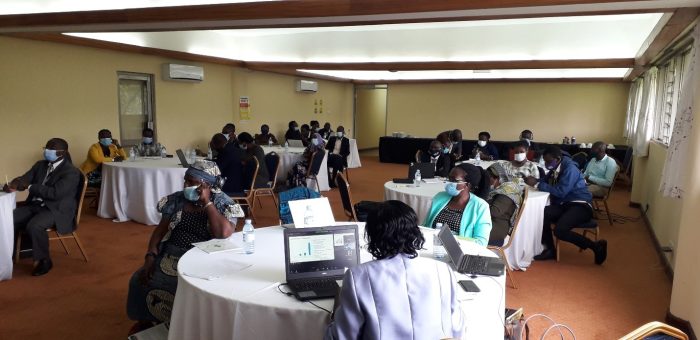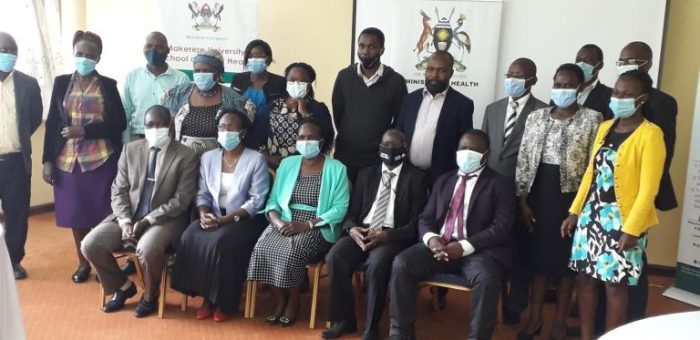

On 30th March 2021 the Makerere University Centre of Excellence for Maternal Newborn and Child Health joined Makerere University School of Public Health and Centre for Global Child Health at The Hospital for Sick Children (SickKids), Canada in the dissemination event for the Exemplars in Stunting Reduction project. The event was hybrid in nature (physical and virtual on zoom) and brought together different stakeholders from across the world including academia, the media, representatives from the Ministry of Health in Uganda, International Non-Government Organizations (INGOs), Civil Society Organizations (CSOs) and the independent participants from the development spectrum.
Investigators from Center for Global Health at The Hospital for Sick Children (SickKids) presented the study approach which was a mixed methods case study where the literature review focused on the systematic search of peer reviewed and grey literature; quantitative analysis focusing on the DHS and MICS datasets; qualitative analysis that shared expert and community interviews to understand stakeholder/ community perspectives on drivers of stunting decline and lastly the policy program review & financing analysis. Further the team shared the study areas, topics covered and translating the lessons per area and later share the quantitative data findings showing Uganda’s major progress in decreasing the stunting rates over the years.
The team from Makerere University shared the qualitative results presenting the reasons as to why there has been reduction in stunting, factors for the disparity in stunting rates among regions because it was found that Teso region is the best and Tooro region is at the lowest levels of stunting as a result of the life styles in the two regions. Our Team Lead prof Peter Waiswa said “… Uganda was selected to participate because it was also a success story however, it did not reach Senegal and Ethiopia…This success is attributed to several factors like women empowerment, political stability, improved house hold wealth among other issues…however there’s need to design strategies targeting the poor and we must pay close attention to these strategies adolescent friendliness for them to succeed.”
There was major finding that there was no nutrition specific project funded by the government of Uganda even when the country’s stunting rates have reduced tremendously over the years and this raised a lot of questions from the Ministry officials who responded that there are several projects addressing the stunting issue but they are broad and not nutrition specific and there was a common understanding that there is need for nutrition specific projects funding for easy measurement of the results.
While giving closing remarks, the commissioner for community health who was representing the Minister of Health in Uganda applauded the study team for the work well done and showing the country a direction on which to take when implementing projects. “… the topic shared today is heart warming because it affects the country’s wellness and having teams like this to come and share knowledge is an honor… we are pleased to see such studies and they always guide the work we do.” The commissioner went ahead and encouraged the team to look at the wellness projects implemented by the government. He highlighted that these are so many and once evaluated they concretize and validate the findings of the study. The ended by encouraging the team to keep up with the good work and called upon more academics to come on board and conduct studies of this kind.
Group photo at the end of the dissemination event

ABOUT THE STUDY:
The Exemplars in Stunting Reduction project was designed to investigate the trends, determinants, and success factors among countries that had achieved a rapid rate of childhood stunting reduction relative to their economic growth.
Since the early 2000s, Uganda has experienced considerable poverty reduction; decreased maternal, newborn, and child mortality; increased adult/youth literacy and female empowerment; increased livestock and cereal production; improved access to maternal care; and widespread malaria-reduction strategies – all of which link to a multifactorial stunting reduction success story.
To examine the national-, community-, household-, and individual-level factors that have driven stunting reduction in Uganda from 2000 to 2016, a mixed-methods study was conducted. A systematic review, descriptive and advanced quantitative analyses, qualitative research, a policy/program review, and a nutrition financing analysis were undertaken, and data was triangulated to inform study objectives.
THE INVESTIGATORS:
Makerere University, School of Public Health (MakSPH), Uganda
- Principal Investigator: Richard Kajjura, PhD
- Co-Principal Investigator: Peter Waiswa, PhD
Centre for Global Child Health at The Hospital for Sick Children (SickKids), Canada
- Principal Investigator: Zulfiqar A Bhutta, PhD
- Co-Principal Investigator: Emily Keats, PhD
